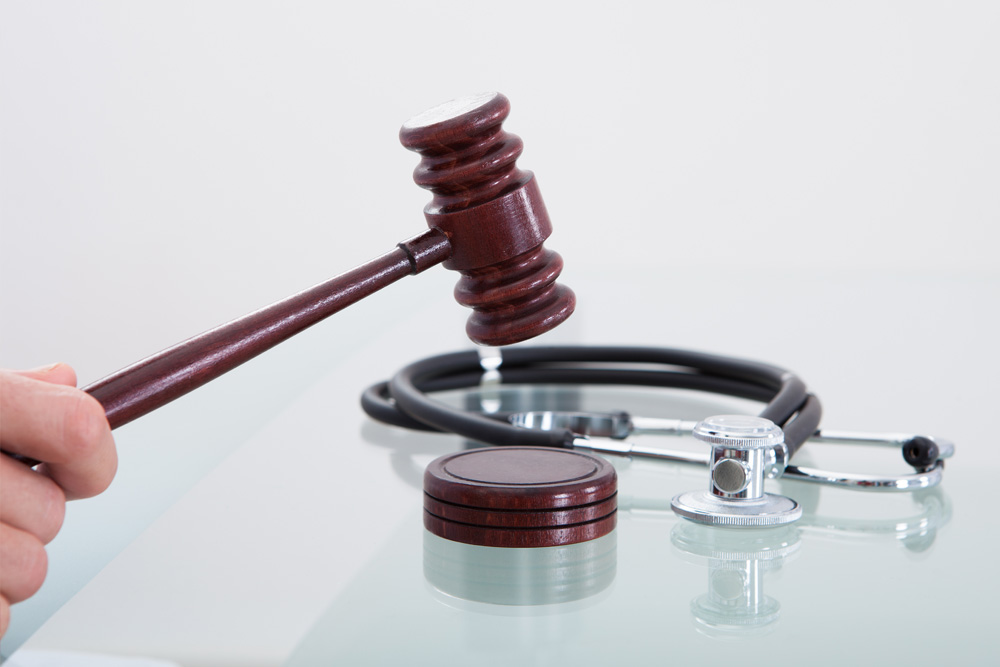If you or a loved one has been injured by a doctor or hospital, Call the Medical Malpractice Crisis Resource Line for Immediate Help >
Free Consultation. Call Now. (516) 394-4200
(516) 394-4200

“Lost chance” cases are some of the most legally complicated cases in medical malpractice law. Adding to their complexity, however, is a surprising lack of detail in jury instructions relating to proximate cause issues in “lost chance” cases. While this may seem like a minor legal technicality, this lack of detail can have a significant impact on medical malpractice cases where the lost chance doctrine is relevant.
What Is the Lost Chance Doctrine?
The “lost chance” doctrine is a legal doctrine that is used almost exclusively in medical malpractice cases. It is used in cases where the doctor’s negligence or malpractice more likely than not deprived the patient of a substantial chance or possibility of a better outcome and / or increased the patient’s pain and suffering. For example, a patient who had Stage I cancer may have had a 75% chance of recovery, but due to a doctor’s malpractice, the cancer was not properly diagnosed until it had become a Stage II cancer, reducing their chance of recovery to 55% and causing additional pain and suffering. Under this doctrine, the doctor could be held liable for that 20% lost chance of recovery and additional pain and suffering.
What Does Proximate Mean In Lost Chance Cases?
In medical practice cases a doctor is only liable to a patient if the alleged negligent act or omission is a proximate cause of the patient’s injury. There may be more than one cause of an injury. In order to be liable, the doctor’s negligent act or omission must be a substantial factor in bringing about the patient’s injury. That is if it had such an effect in producing the injury that reasonable people would regard it as a cause of the injury. In “lost chance” cases, the lost chance itself may be considered the injury. Using the above example, the patient must prove by
the greater weight of the credible evidence whether the doctor’s failure to timely diagnose the cancer more likely than not deprived the patient of a substantial chance or possibility of a cure or better outcome and /or increased his or her pain and suffering.
Why Do Jury Instructions Matter?
Medical malpractice cases, and lost chance doctrine cases in particular, often have complex issues related to causation. After all, in a lost chance case, the doctors, nurses, and other medical professionals did not actually cause the cancer or underlying medical condition. They are being held responsible for diminishing a patient’s chances for a cure or better outcome due to worsening of the underlying condition This complexity can make it difficult for a jury in a medical malpractice case to understand whether the act of malpractice in question was a proximate cause of the patient’s injuries and pain and suffering.
In theory, the jury instructions should clarify this issue so that a jury can understand how to attribute causation. In practice, though, jury instructions related to the issue of proximate cause are surprisingly minimal, to the point where they can be potentially misleading or confusing for a jury considering a “lost chance” case. It is entirely possible that a jury reading these instructions may not realize that a negligent doctor, nurse, lab technician, or other medical professional could be held liable, assuming they were not the proximate cause because they did not “cause” the plaintiff to have their medical condition or mistakenly believing that the lost chance to be substantial has to be greater than 50%.
How Can This Be Fixed?
Alan W. Clark, of-counsel for Duffy & Duffy, PLLC, has recommended new proposed jury charges to specifically address proximate cause in lost chance cases. Ideally, this would be done as early as possible in the trial process, even during voir dire of potential jurors. That way, the current ambiguity in the law could be addressed, creating more consistent results in malpractice cases where a “lost chance” is at issue.
The New York medical malpractice attorneys at Duffy & Duffy have decades of experience in handling personal injury and medical malpractice issues. With our offices conveniently located in Uniondale, we are ready to assist you with your case and ensure it receives the personal attention it deserves. If you want to learn more or receive a free consultation, give us a call at (516) 394 – 4200, or visit our contact page.
No. Our injury cases are handled on a contingent retainer. You pay nothing upfront, and we recover attorney’s fees only if your litigation is successful. We don’t bill by the hour. You don’t need to worry about running up a large attorney’s bill before you see any recovery for your injuries.
Yes. Our firm is dedicated to creating a strong relationship with our clients, beginning with keeping your information and consultation confidential.
Each case we encounter is carefully screened and evidence scrutinized to make sure the claim is meritorious and may be successful at trial. We will perform an investigation, and then our partners make a final decision on whether to take on a case.